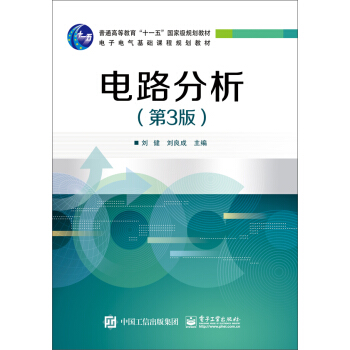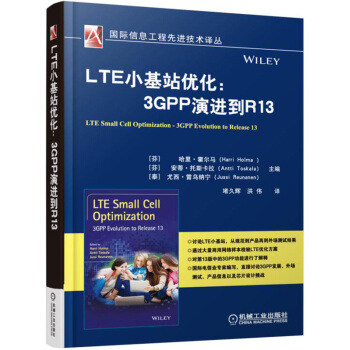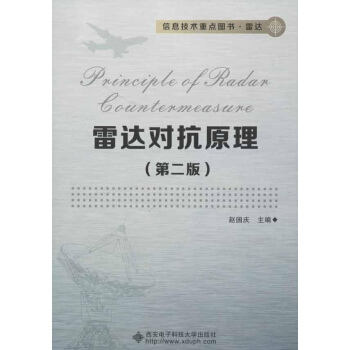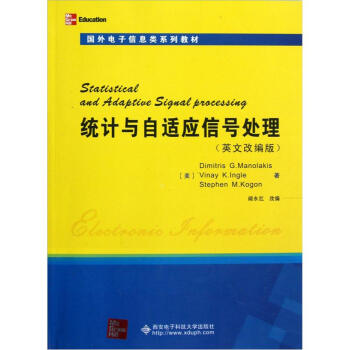

具体描述
编辑推荐
《国外电子信息类系列教材:统计与自适应信号处理(英文改编版)》由Dimitris G.Manolakis、Vinay K.Ingle、Stephen M.Kogon著,阔永江改编,内容:Chapter 1 introduces the basic concepts and applications of statistical and adaptive signal processing and provides an overview of the book.Chapters 2 introduce some basic concepts of estimation theory.Chapter 3 provides a treatment of parametric linear signal models in the time and frequency domains.Chapter 4 presents the most practical methods for the estimation of correlation and spectral densities.Chapter 5 provides a detailed study of the theoretical properties of optimum filters,assuming that the relevant signals can be modeled as stochastic processes with known statistical properties; and Chapter 6 contains algorithms and structures for optimum filtering,signal modeling,and prediction.Chapter 7 introduces the principle of least-squares estimation and its application to the design of practical filters and predictors……内容简介
《国外电子信息类系列教材:统计与自适应信号处理(英文改编版)》介绍了统计与自 适应信号处理的基本概念和应用,包括随机序列分析、谱估计以及自适应滤波等内容。本书可作为电子、通信、自动化、电机、生物医 学和机械工程等专业研究生作为教材或教学参考书,也可作为广大工程技术人员的自学读本或参考用书。作者简介
Dimitris G.Manolakis:于希腊雅典大学获得物理学士学位和电气工程博士学位,现任美国麻省林肯实验室研究员;曾在Riveride研究所任主任研究员,并曾在雅典大学、美国东北大学、波士顿学院、沃切斯特理工学院任教。Vinay K.Ingle:于伦斯勒理工学院获得电气和计算机工程的博士学位,曾在多所大学讲授过信号处理课程,具有丰富的研究经历;1981年加入美国东北大学,目前在电气工程和计算机系任职。
Stephen M.Kogon:于佐治亚理工学院获得电气工程博士学位,现任美国麻省林肯实验室研究员;曾就职于Raytheon公司、波士顿大学和佐治亚技术研究所。
目录
CHAPTER 1 Introduction1.1 Random Signals
1.2 Spectral Estimation
1.3 Signal Modeling
1.4 Adaptive Filtering
1.4.1 Applicatior of Adaptive Filter
1.4.2 Features of Adaptive Filter
1.5 Organization of the Book
CHAPTER 2 Random Sequences
2.1 Discrete-Time Stochastic Processes
2.1.1 Description Using Probability Functior
2.1.2 Second-Order Statistical Description
2.1.3 Stationarity
2.1.4 Ergodicity
2.1.5 Random Signal Variability
2.1.6 Frequency-Domain Description of Stationary Processes
2.2 Linear Systems with Stationary Random Inputs
2.2.1 Time-Domain Analysis
2.2.2 Frequency-Domain Analysis
2.2.3 Random Signal Memory
2.2.4 General Correlation Matrices
2.2.5 Correlation Matrices from Random Processes
2.3 Innovatior Representation of Random Vector
2.4 Principles of Estimation Theory
2.4.1 Properties of Estimator
2.4.2 Estimation of Mean
2.4.3 Estimation of Variance
2.5 Summary
Problems
CHAPTER 3 Linear Signal Models
3.1 Introduction
3.1.1 Linear Nonparametric Signal Models
3.1.2 Parametric Pole-Zero Signal Models
3.1.3 Mixed Processes and Wold Decomposition
3.2 All-Pole Models
3.2.1 Model Properties
3.2.2 All-Pole Modeling and Linear Prediction
3.2.3 Autoregressive Models
3.2.4 Lower-Order Models
3.3 All-Zero Models
3.3.1 Model Properties
3.3.2 Moving-Average Models
3.3.3 Lower-Order Models
3.4 Pole-Zero Models
3.4.1 Model Properties
3.4.2 Autoregressive Moving-Average Models
3.4.3 The Firt-Order Pole-Zero Model:PZ(1,1)
3.4.4 Summary and Dualities
3.5 Summary
Problems
CHAPTER 4 Nonparametric Power Spectrum Estimation
4.1 Spectral Analysis of Deterministic Signals
4.1.1 Effect of Signal Sampling
4.1.2 Windowing,Periodic Exterion,and Extrapolation
4.1.3 Effect of Spectrum Sampling
4.1.4 Effects of Windowing:Leakage and Loss of Resolution
4.1.5 Summary
4.2 Estimation of the Autocorrelation of Stationary Random Signals
4.3 Estimation of the Power Spectrum of Stationary Random Signals
4.3.1 Power Spectrum Estimation Using the Periodogram
4.3.2 Power Spectrum Estimation by Smoothing a Single Periodogram——The Blackman-Tukey Method
4.3.3 Power Spectrum Estimation by Averaging Multiple Periodograms——The Welch-Bartlett Method
4.3.4 Some Practical Corideratior and Examples
4.4 Multitaper Power Spectrum Estimation
4.5 Summary
Problems
CHAPTER 5 Optimum Linear Filter
5.1 Optimum Signal Estimation
5.2 Linear Mean Square Error Estimation
5.2.1 Error Performance Surface
5.2.2 Derivation of the Linear MMSE Estimator
5.2.3 Principal-Component Analysis of the Optimum Linear Estimator
5.2.4 Geometric Interpretatior and the Principle of Orthogonality
5.2.5 Summary and Further Properties
5.3 Optimum Finite Impulse Respore Filter
5.3.1 Design and Properties
5.3.2 Optimum FIR Filter for Stationary Processes
5.3.3 Frequency-Domain Interpretatior
5.4 Linear Prediction
5.4.1 Linear Signal Estimation
5.4.2 Forward Linear Prediction
5.4.3 Backward Linear Prediction
5.4.4 Stationary Processes
5.4.5 Properties
5.5 Optimum Infinite Impulse Respore Filter
5.5.1 Noncausal IIR Filter
5.5.2 Causal IIR Filter
5.5.3 Filtering of Additive Noise
5.5.4 Linear Prediction Using the Infinite Past——Whitening
5.6 Invere Filtering and Deconvolution
5.7 Summary
Problems
CHAPTER 6 Algorthms and Structures for Optimum Linear Filter
6.1 Fundamentals of Order-Recurive Algorithms
6.1.1 Matrix Partitioning and Optimum Nesting .
6.1.2 Inverion of Partitioned Hermitian Matrices
6.1.3 Leviron Recurion for the Optimum Estimator
6.1.4 Order-Recurive Computation of the LDLH Decomposition
6.1.5 Order-Recurive Computation of the Optimum Estimate
6.2 Interpretatior of Algorithmic Quantities
6.2.1 Innovatior and Backward Prediction
6.2.2 Partial Correlation
6.2.3 Order Decomposition of the Optimum Estimate
6.2.4 Gram-Schmidt Orthogonalization
6.3 Order-Recurive Algorithms for Optimum FIR Filter
6.3.1 Order-Recurive Computation of the Optimum Filter
6.3.2 Lattice-Ladder Structure
6.3.3 Simplificatior for Stationary Stochastic Processes
6.4 Algorithms of Leviron and Leviron-Durbin
6.5 Lattice Structures for Optimum Fir Filter And Predictor
6.5.1 Lattice-Ladder Structures
6.5.2 Some Properties and Interpretatior
6.5.3 Parameter Converior
6.6 Summary
Problems
CHAPTER 7 Least-Squares Filtering and Prediction
7.1 The Principle of Least Squares
7.2 Linear Least-Squares Error Estimation
7.2.1 Derivation of the Normal Equatior
7.2.2 Statistical Properties of Least-Squares Estimater
7.3 Least-Squares FIR Filter
7.4 Linear Least-Squares Signal Estimation
7.4.1 Signal Estimation and Linear Prediction
7.4.2 Combined Forward and Backward Linear Prediction(FBLP)
7.4.3 Narrowband Interference Cancelation
7.5 LS Computatior Using the Normal Equatior
7.5.1 Linear LSE Estimation
7.5.2 LSE FIR Filtering and Prediction
7.6 Summary
Problems
CHAPTER 8 Signal Modeling and Parametric Spectral Estimation
8.1 The Modeling Process:Theory and Practice
8.2 Estimation of All-Pole Models
8.2.1 Direct Structures
8.2.2 Lattice Structures
8.2.3 Maximum Entropy Method
8.2.4 Excitatior with Line Spectra
8.3 Estimation Of Pole-Zero Models
8.3.1 Known Excitation
8.3.2 Unknown Excitation
8.4 Applicatior
8.4.1 Spectral Estimation
8.4.2 Speech Modeling
8.5 Harmonic Models and Frequency Estimation Techniques
8.5.1 Harmonic Model
8.5.2 Pisarenko Harmonic Decomposition
8.5.3 MUSIC Algorithm
8.5.4 Minimum-Norm Method
8.5.5 ESPRIT Algorithm
8.6 Summary
Problems
CHAPTER 9 Adaptive Filter
9.1 Typical Applicatior of Adaptive Filter
9.1.1 Echo Cancelation in Communicatior
9.1.2 Linear Predictive Coding
9.1.3 Noise Cancelation
9.2 Principles of Adaptive Filter
9.2.1 Features of Adaptive Filter
9.2.2 Optimum verus Adaptive Filter
9.2.3 Stability and Steady-State Performance of Adaptive Filter
9.2.4 Some Practical Corideratior
9.3 Method of Steepest Descent
9.4 Least-Mean-Square Adaptive Filter
9.4.1 Derivation
9.4.2 Adaptation in a Stationary SOE
9.4.3 Summary and Design Guidelines
9.4.4 Applicatior of the LMS Algorithm
9.4.5 Some Practical Corideratior
9.5 Recurive Least-Squares Adaptive Filter
9.5.1 LS Adaptive Filter
9.5.2 Conventional Recurive Least-Squares Algorithm
9.5.3 Some Practical Corideratior
9.5.4 Convergence and Performance Analysis
9.6 Fast RLS Algorithms for FIR Filtering
9.6.1 Fast Fixed-Order RLS FIR Filter
9.6.2 RLS Lattice-Ladder Filter
9.6.3 RLS Lattice-Ladder Filter Using Error Feedback Updatings
9.7 Tracking Performance of Adaptive Algorithms
9.7.1 Approaches for Nortationary SOE
9.7.2 Preliminaries in Performance Analysis
9.7.3 LMS Algorithm
9.7.4 RLS Algorithm with Exponential Forgetting
9.7.5 Comparison of Tracking Performance
9.8 Summary
Problems
前言/序言
用户评价
《国外电子信息类系列教材:统计与自适应信号处理(英文改编版)》这本书,在我看来,是一本不可多得的经典之作。它以一种非常独特和深入的视角,剖析了统计学如何深刻地影响并塑造着现代信号处理的各个方面。书中不仅仅介绍了基本的信号处理概念,更是将统计推断、随机过程理论等高级数学工具巧妙地融入到信号分析与处理的框架中,让我得以站在一个更高的维度去审视信号处理问题。我特别喜欢书中对各种噪声模型及其对信号处理算法影响的详细讨论,这使得我对信号处理中的不确定性和随机性有了更清晰的认识,也学会了如何设计更鲁棒的算法来应对实际中的挑战。此外,书中对自适应算法的讲解,不仅包括理论推导,更深入探讨了这些算法的收敛性、性能边界以及在实际系统中的实现考量,这些都是在其他教材中很难找到的宝贵信息。这本书的英文版本阅读起来非常舒适,内容安排也很有条理。
评分作为一名渴望深入理解信号处理领域的学生,我一直对《国外电子信息类系列教材:统计与自适应信号处理(英文改编版)》这本书抱有极大的兴趣。在我看来,这是一本极具前瞻性和实用性的著作。它不仅仅停留在理论的讲解,更是将抽象的统计概念巧妙地融入到信号处理的实际应用中,让我得以窥见信号分析与处理的深层奥秘。书中对于各种统计模型在信号去噪、信号检测、参数估计等方面的应用进行了详尽的阐述,尤其是在面对复杂噪声环境和未知信号特性时,书中的方法提供了坚实的理论基础和可行的解决方案。我特别欣赏作者在介绍复杂算法时,能够从最基本的原理出发,层层递进,使得即使是初学者也能逐步掌握,不至于感到无从下手。书中丰富的图示和实例分析,更是将枯燥的数学公式转化为生动的技术画面,极大地增强了我的理解力和学习兴趣。此外,该书的英文改编版在保留原著精髓的同时,在语言表达上也力求清晰流畅,对于非英语母语的学习者来说,这是一个巨大的福音,能够有效降低阅读障碍,更快地吸收知识。
评分最近我一直在研读《国外电子信息类系列教材:统计与自适应信号处理(英文改编版)》,这本书带给我的惊喜和启发是前所未有的。作为一名已经有一定信号处理基础的学生,我发现这本书的内容对我而言,恰到好处地填补了我知识体系中的一些空白,特别是关于统计信号处理的前沿进展和精妙设计。书中对现代谱估计方法、高分辨率谱估计技术等内容的介绍,让我对信号的频率特性有了更深刻的认识,也掌握了处理复杂信号频谱分析的有效工具。我尤其对书中关于卡尔曼滤波及其变种在状态估计中的应用分析感到印象深刻,这部分内容详细讲解了如何在存在噪声的情况下,对动态系统的状态进行最优估计,这对于我参与的雷达信号处理项目非常有指导意义。书中的例子也选取得恰当好处,能够帮助我将理论知识与实际应用联系起来,进行更深入的思考。这本书的英文改编版在保留了原著的严谨性的同时,语言上也更加易于理解,逻辑性很强,读起来非常顺畅。
评分作为一名对信号处理领域充满好奇的学习者,我一直渴望能够找到一本能够系统性地、深入浅出地讲解统计与自适应信号处理的书籍。《国外电子信息类系列教材:统计与自适应信号处理(英文改编版)》无疑满足了我的这一需求,并且远远超出了我的预期。这本书的深度和广度都令人惊叹,它将统计学理论与信号处理的实际应用无缝地结合在一起,构建了一个完整的知识体系。我尤其欣赏书中对各种信号模型假设的讨论,以及这些假设如何影响最终的信号处理结果,这让我能够更批判性地看待问题,并根据具体场景选择最合适的处理方法。书中对于信号检测理论的讲解,也为我理解如何从噪声中提取有用的信号信息提供了坚实的理论基础,这一点对于我正在进行的研究项目至关重要。总而言之,这本书的英文改编版以其清晰的语言、严谨的逻辑和丰富的实例,为我打开了一扇通往更高级信号处理领域的大门,让我对未来的学习和研究充满了信心。
评分我曾一度在信号处理的海洋中迷失方向,感觉理论知识与实际应用之间存在一道难以逾越的鸿沟。直到我接触了《国外电子信息类系列教材:统计与自适应信号处理(英文改编版)》,才仿佛找到了那盏指路的明灯。《统计与自适应信号处理》这一主题本身就充满了挑战与吸引力,而这本书恰恰以一种极为系统和深入的方式,将这个主题的精髓展现得淋漓尽致。它不仅仅是一本教材,更像是一本思想的启迪者。书中对自适应滤波器的各种经典算法,如LMS、RLS等的推导过程,清晰明了,并且详细分析了它们在不同场景下的优缺点和适用范围,这一点对我来说尤为重要,因为在实际工程中,选择合适的算法往往是决定项目成败的关键。作者还花了相当篇幅讲解了贝叶斯统计在信号处理中的应用,这部分内容对我拓展思路、理解更高级的信号处理技术起到了至关重要的作用。书中的内容严谨而不失趣味,理论与实践相结合,让我深刻体会到统计学在现代信号处理领域不可或缺的地位。
评分算法经典,性能优越。
评分书不知道怎么评价,不敢乱评价。
评分书不知道怎么评价,不敢乱评价。
评分书不知道怎么评价,不敢乱评价。
评分品相太差了!!!!!
评分以后还会买
评分《国外电子信息类系列教材:统计与自适应信号处理(英文改编版)》介绍了统计与自 适应信号处理的基本概念和应用,包括随机序列分析、谱估计以及自适应滤波等内容。本书可作为电子、通信、自动化、电机、生物医 学和机械工程等专业研究生作为教材或教学参考书,也可作为广大工程技术人员的自学读本或参考用书。
评分以后还会买
评分书不知道怎么评价,不敢乱评价。
相关图书
本站所有内容均为互联网搜索引擎提供的公开搜索信息,本站不存储任何数据与内容,任何内容与数据均与本站无关,如有需要请联系相关搜索引擎包括但不限于百度,google,bing,sogou 等
© 2025 book.idnshop.cc All Rights Reserved. 静思书屋 版权所有

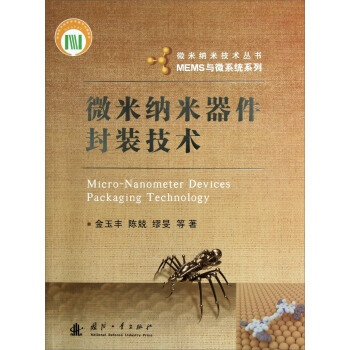
![水下声传感器网络 [Underwater Acoustic Sensor Networks] pdf epub mobi 电子书 下载](https://pic.tinynews.org/11200827/rBEQWVFjo_0IAAAAAADnA3uq8k8AADtQQOQGhYAAOcb080.jpg)

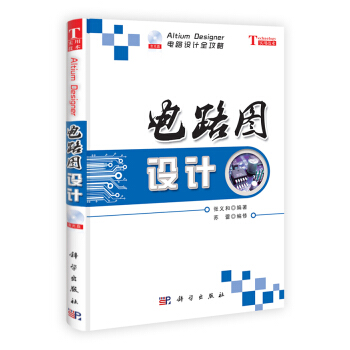
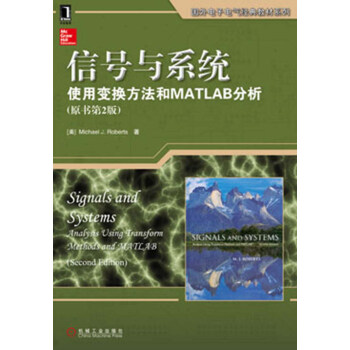
![中外物理学精品书系·引进系列(23)·光子晶体光纤:特性及应用(影印版) [Photonic Crystal Fibers] pdf epub mobi 电子书 下载](https://pic.tinynews.org/11305541/rBEhVlIdZB8IAAAAAALGZ6quGCYAACj0gDxbqkAAsZ_918.jpg)

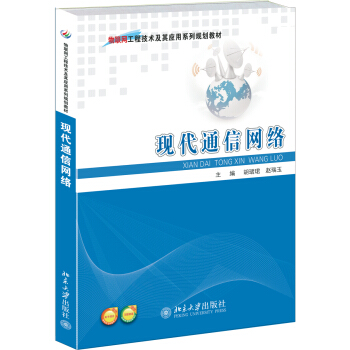
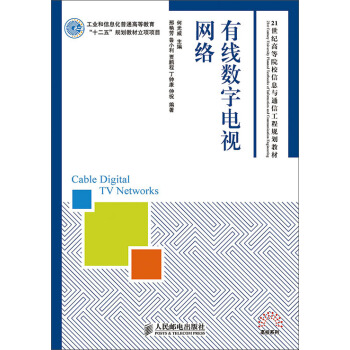
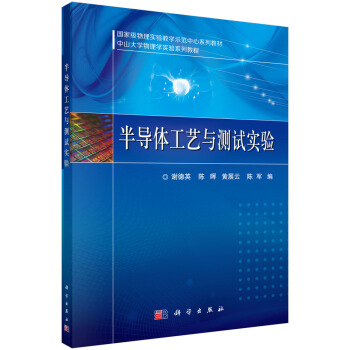

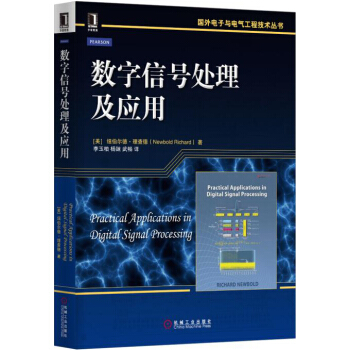
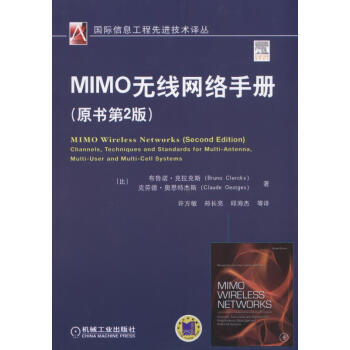
![信号处理与集成电路 [Signal Processing and Integrated Circuits] pdf epub mobi 电子书 下载](https://pic.tinynews.org/11838380/567a0145Ndacfde25.jpg)
![实用模拟电路设计(第二版) [Intuitive Analog Circuit Design, Second Edition] pdf epub mobi 电子书 下载](https://pic.tinynews.org/11848176/5684d137N72ba6308.jpg)
